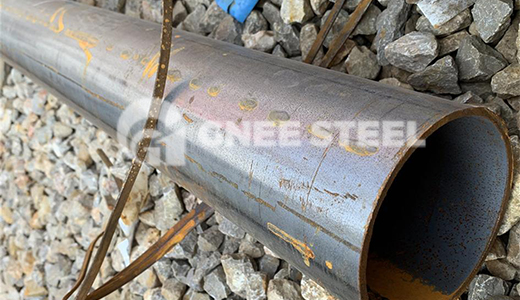- The influence of welding current, arc voltage and welding speed on welding sea
1. Welding current
When the welding current increases (other conditions remain unchanged), the penetration depth and reinforcement of the weld increase, and the penetration width remains unchanged (or slightly increases). The reasons are as follows: ① After the current increases, the arc force and heat input on the workpiece both increases, the heat source position moves downward, and the penetration depth increases. The relationship between penetration depth and current is nearly proportional. ② After the current increases, the melting amount of the welding wire increases almost proportionally. Since the melting width is almost unchanged, the residual height increases. ③ After the current increases, the diameter of the arc column increases, but the depth of the arc penetrating into the workpiece increases, and the moving range of the arc spot is limited, so the melting width remains nearly unchanged.
2. Arc voltage
After the arc voltage increases, the arc power increases, the heat input of the workpiece increases, the arc length lengthens, and the distribution radius increases, so the penetration depth slightly decreases and the melt width increases; the residual height decreases because The melting width increases, but the melting amount of the welding wire decreases slightly.
3. Welding speed
When the welding speed increases, the line energy decreases, and the penetration depth, melt width, and reinforcement decrease. This is because the amount of wire metal deposited per unit length of the weld is inversely proportional to the welding speed, and the melt width is inversely proportional to the square root of the welding speed.
.jpg)
DC positive connection: the workpiece is connected to the positive pole of the welding machine, and the welding gun is connected to the negative pole of the welding machine;
DC reverse connection: the workpiece is connected to the negative pole of the welding machine, and the welding gun is connected to the positive pole of the welding machine.
Generally, in melting electrode arc welding, the penetration depth and width are larger when the DC is reversely connected than when the DC is connected directly. This is because the energy released by the workpiece (cathode) is larger. When direct current is connected, the welding wire is the cathode and the melting rate of the welding wire is larger.
During tungsten arc welding, the penetration depth is the largest for direct current connection and the smallest for reverse connection. Welding aluminum, magnesium and alloys has the problem of removing the oxide film on the surface of the molten pool. It is better to use AC. Reverse connection can also be used when welding thin plates. When welding other materials, DC positive connection is generally used.

- Welding seam forming defects and causes of defects
1. Incomplete penetration: During fusion welding, the phenomenon that the root of the joint is not completely penetrated is called incomplete penetration. The reason is that the welding current is small, the welding speed is too high, the groove size is inappropriate, and the welding wire is not aligned with the center of the weld. When short-circuiting transitional CO2 welding with thin wires, this defect is prone to occur due to low heat input to the workpiece.
2. Burn-through: During welding, the molten metal flows out from the back of the weld, forming a perforation called burn-through. This defect may occur if the welding current is too large, the welding speed is too small, or the gap groove size is too large.
3. Undercut: The phenomenon of melting and forming depressions or grooves in the base metal along the weld is called undercut. Defects may occur during high current and high speed welding. When welding fillet welds with the web in a vertical position, if the welding leg of one weld is too large or the voltage is too high, undercuts will also occur. Improper operation when welding butt joints will also occur.
4. Weld nodules: During welding, the molten metal flows to the unfused base material outside the weld to form metal nodules, which is called weld nodules. Weld spatter is caused by excessive filler metal, which is related to small gap and groove size, low welding speed, low voltage, or large wire extension length.
.jpg)
